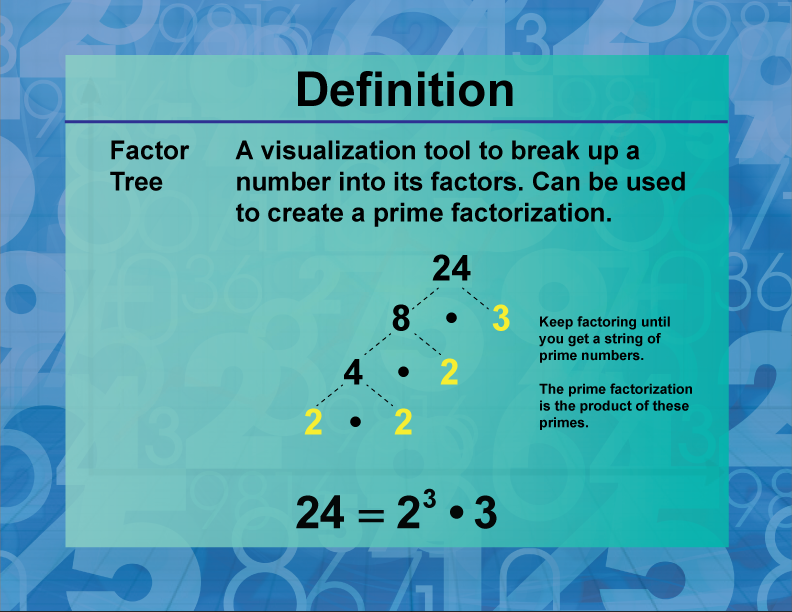
Display Title
Definition--Prime and Composite Properties--Factor Tree
Display Title
Factor Tree

Topic
Prime and Composite Numbers
Definition
A factor tree is a graphical representation used to determine the prime factors of a composite number by breaking it down into its prime components.
Description
A factor tree is a useful tool in the study of prime and composite numbers. It helps to simplify the process of finding the prime factors of a composite number, which is a number that has more than two distinct positive divisors. The factor tree starts with the composite number at the top and branches out by dividing the number into its factors. This process continues until all the branches end in prime numbers, which are numbers greater than 1 that have no positive divisors other than 1 and themselves.
Using a factor tree provides a visual and systematic method for prime factorization, which is essential for various applications in mathematics, including simplifying fractions, finding the greatest common divisor (GCD), and solving problems related to number theory. By breaking down a composite number into its prime factors, one can better understand the structure and properties of numbers. This method also reinforces the fundamental theorem of arithmetic, which states that every integer greater than 1 is either a prime number or can be factored into prime numbers uniquely, up to the order of the factors.
For a complete collection of terms related to primes and composites click on this link: Prime and Composites Collection.
| Common Core Standards | CCSS.MATH.CONTENT.4.OA.B.4 |
|---|---|
| Grade Range | 4 - 6 |
| Curriculum Nodes |
Arithmetic • Numbers and Patterns • Prime and Composite Numbers |
| Copyright Year | 2021 |
| Keywords | composite numbers, prime numbers, factors, definitions, glossary term |